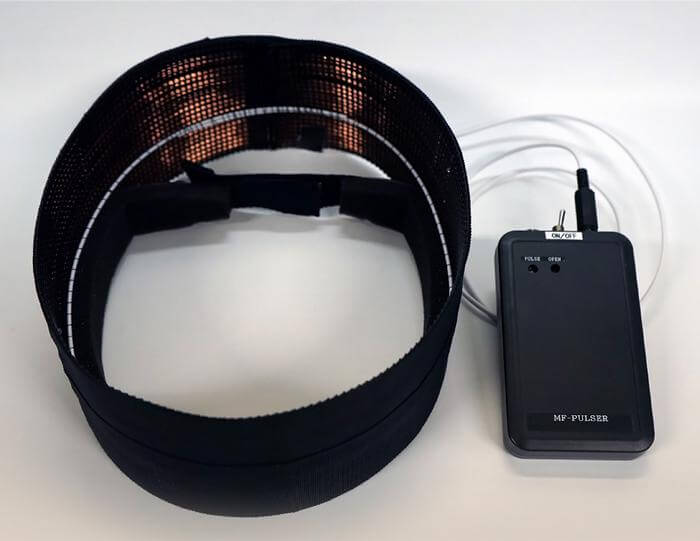NAGOYA, Japan — Could a wearable headband harnessing the power of magnetic fields replace antidepressants? Japanese researchers have developed a head-mounted device that creates an ultra-low frequency magnetic field, which may alleviate the symptoms of depression.
During a small clinical trial, published in the Asian Journal of Psychiatry, the team found that the headband was effective in improving depressive symptoms among four men diagnosed with major depressive disorder. The device may also offer a safer and non-invasive method for tackling the low energy people with depression often deal with.
“Compared to current depression treatments, such as long-term antidepressant medications, electroconvulsive therapy, and repetitive transcranial magnetic stimulation, this therapy is superior in terms of convenience and lack of anticipated side effects,” says Toshiya Inada, a professor at the Nagoya University Graduate School of Medicine, in a university release. “We could see our device being used for patients who prefer not to take medication or safely in combination with other treatments.”
Magnetic fields with frequencies ranging from 0 to 300 hertz are known as an Extremely Low Frequency Magnetic Environment. Scientists are still trying to understand the full impact magnetic fields have on the human body, but one hypothesis is that these frequencies stimulate mitochondrial growth. Since mitochondria are in charge of making cellular energy, the authors suggest this new type of frequency therapy could help reverse lethargy and low energy among people with depression.

Four Japanese men between the ages of 18 and 75 enrolled in this first-of-its-kind clinical trial. All of them had been diagnosed with major depressive disorder and were receiving treatment. Each person wore the head-mounted magnetic field device, exposing them to ultra-low frequency for two hours a day for eight weeks.
“The magnetic field generated by the device is non-invasive, being 1/4.5 of the Japanese geomagnetic field and less than 1/60 of the International Commission on Non-Ionizing Radiation Protection’s general public exposure standard,” adds Inada.
As expected, all patients reported a decrease in symptoms related to their depression. Since this was an extremely small sample size, there was no control group, and the men were aware they were receiving the treatment. However, the authors argue that the information they gathered in this trial will help establish benchmarks for safety, dosage, and potential effectiveness for future studies.
Inada says there is a lot of potential in administering an ultralow magnetic field to reverse mental health issues. Not only is it noninvasive, but people will be able to use the treatment at home every day, and because of its size, they may even forget they have it on their heads.

